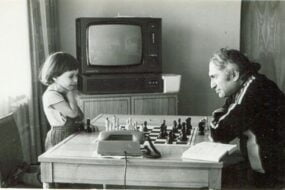
Chess is renowned as the game of kings – a cerebral contest pitting two minds against each other in skillful strategy and cunning. While the rules and pieces have remained largely consistent, chess play and culture have evolved considerably over the game’s 1500-year history as it has spread across the globe.
Origins in India and Persia
Chess originated out of the Indian game Chaturanga sometime around the 6th century AD. Played by four players, it portrayed a battle between armies as an early war simulation. As chaturanga spread via the Silk Road, it was adopted in Persia as chatrang, then shatranj. Arab conquests spread it through North Africa and into Southern Europe by the 10th century.
Evolving Rules and Pieces
In Europe, the pieces became more abstract over time. The vizier became the queen, the elephant became the bishop. Rules evolved too – pawn moves were limited to avoid stalling, and the queen and bishop gained extended movement. Checkmate and castling were introduced. By 1500, modern chess was fully established, though not yet standardized.
Rise of Competitive Chess and Publication
In the 16th century competitive chess took off as coffeehouses popularized casual play. Books on chess strategy emerged, starting with Ruy Lopez’s 1561 manuscript. This allowed systematized study to improve skills beyond just intuition. Chess clubs and competitions arose in Europe. By the 1800s, international tournaments saw champions emerge like France’s Louis de la Bourdonnais.
Birth of Modern Chess Theory
The late 19th century saw massive evolution in chess theory and understanding of the game. 1873 saw the creation of the first definitive rules by the London Chess Club. Wilheim Steinitz established principles of positional play rather than just attacking. Chess clocks were utilized to limit time per move. Opening theory was extensively analyzed by scholars.
20th Century Innovation and Globalization
The 1924 Olympiad broadened chess’s global reach as more countries competed. Innovations like computer analysis and chess databases emerged. Titles such as Grandmaster and International Master were formalized.
The iconic World Chess Championship allowed the best players on earth to compete for supremacy. Global stars like Bobby Fischer, Garry Kasparov, Anatoly Karpov, and Magnus Carlsen have carried chess’s popularity worldwide. Chess even extended into pop culture and mass media.
Revolutionizing Chess with Computers and the Internet
Advanced chess programs starting in the 1990s allowed software to compete against human strategy. Online chess servers made play easily accessible while broadcasting matches online created a new spectator experience. Databases of openings and games enabled better preparation and analysis. Rating systems tracked skills more accurately.
Computers have transformed analysis at the highest levels, though the creativity and intuition of human players remain irreplaceable. These technological innovations have made top-level chess more nuanced and accelerated the sport’s evolution.
Chess in the Future
From its ancient Indian origins to today’s apps and e-tournaments, chess has long been a game of constant evolution. Variants like Blitz and Fischer Random provide fresh twists while keeping the essence unchanged. Globalization continues expanding the sport’s reach.
As chess moves into the digital age, new possibilities arise, be it AI, VR, or innovative team competitions. But no matter how the game changes and spreads, that irresistible feeling of pitting minds in close combat over the board will keep chess evergreen and forever enthralling its devotees worldwide. The timeless game has many great chapters yet to come.
Comment down your thoughts on what will be the future of chess.









